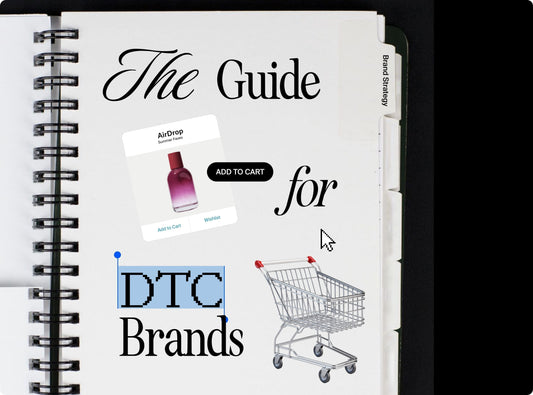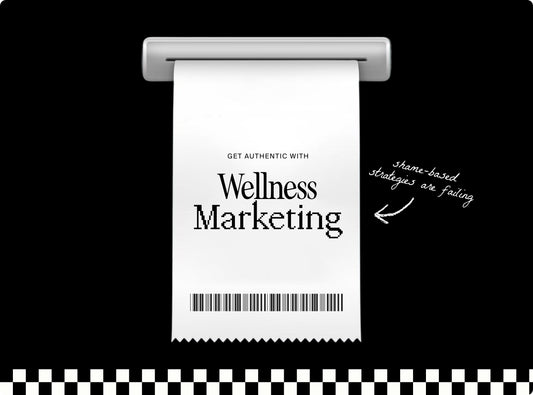Let’s be honest about what we see in our feeds every day. The wellness industry has built a $4.4 trillion empire largely on making people feel broken first…then selling the fix.
For too long, we've normalized "What's wrong with you?" as a valid wellness marketing strategy.
But fear-based wellness marketing is lazy marketing. And it's starting to backfire.
Time to write a new playbook.
Why Shame-Based Wellness Marketing Strategies Are Failing
Consumer trust in wellness brands has dropped 34% since 2019.
When Goop settled a $145,000 lawsuit for unsubstantiated health claims, everyone focused on the jade eggs. The real issue is bigger: an industry that profits from telling people that they’re not enough.
The psychological toll on your customers is real. If your wellness marketing campaign message is "you're broken and we can fix you," you're not building brand loyalty. You're creating a dependent relationship.
Plus, fear-based messaging attracts desperate buyers, not your ideal long-term customers.
Give Us The Finger

[Images: Oura]
Oura figured it out brilliantly. Instead of fear-mongering about aging, their "Give us the finger" campaign repositioned getting older as aspirational. Their message: "We believe health isn't just about adding more years to your life—it's about adding more life to your years." A complete reframe of what healthy aging looks like in wellness marketing.
The results = raving reviews.
What Ethical Wellness Marketing Actually Looks Like
The shift is subtle but powerful: from "fix this" to "build this."
A strategic positioning that acknowledges where people are, while showing where they could go. It's the difference between "finally lose that stubborn belly fat" and "built for people who prioritize strength."
Some brands have cracked this code:
→ Headspace: positions meditation as mental fitness
→ Ritual: focuses on transparent nutrition rather than supplement fear-mongering
→ Sakara: treats food as celebration, not restriction
→ Peloton: built community around achievement
Notice what they have in common? They assume their customers are capable, intelligent people who want to enhance their lives.
This approach feels better morally and performs better financially. Brands using empowerment-based messaging see higher customer lifetime value.
When you position your customer as the hero of their own story (instead of the victim of their circumstances), they stick around longer and buy more confidently.
 [Images: Ritual]
[Images: Ritual]
Why Empowerment Sells
When you frame something as loss prevention ("stop aging," "eliminate toxins"), you trigger the brain's threat-detection system. People make defensive, short-term decisions from this state.
But when you frame the same outcome as gain-focused ("support cellular renewal," "nourish your body"), people make exploratory, long-term decisions.
Post-2020, we've seen massive cultural shifts in how people think about wellness. The brands still selling simple solutions to invented problems feel increasingly out of touch.
Three Ways to Market Wellness Ethically
The Addition Method: Instead of "eliminate toxins from your diet," try "add more plants to your plate." Same outcome, different psychological entry point.
Community-First Content: Build belonging before selling solutions. When people feel seen by your brand, they choose you because you get them.
Transparent Education: Teach your audience to become informed consumers, even if it means they might not buy from you. The brands winning long-term trust are the ones willing to say "this might not be right for you if..."

Wellness Messaging That Builds Instead of Breaks
Is your brand building people up or breaking them down?
🚩 Red flag phrases:
- "Finally, a solution for..." (implies they've been suffering)
- "Stop struggling with..." (assumes struggle is their default)
- "Transform your [body part]" (suggests their current state is unacceptable)
🤠Empowering alternatives:
- "Designed for people who..." (acknowledges their identity)
- "Built to support your..." (assumes they're already doing good things)
- "Perfect for anyone ready to..." (assumes capability and choice)
Build a Brand That Actually Feels Good
Shifting from fear-based marketing feels risky when everyone else is screaming about problems to solve. But the brands building lasting impact aren't following everyone else. They're writing New Rules 🎵a la Dua Lipa.





